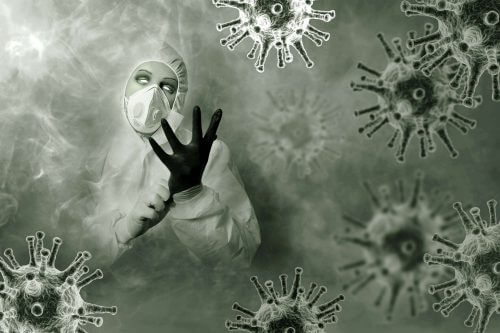In an experiment conducted by the researchers from Ben-Gurion University of the Negev, the Open University, the National Institute of Biotechnology in the Negev and the Soroka Medical Center, the ability to detect positive carriers among approximately 400 samples in only 47 measurements was demonstrated Prof. Daniel Haimowitz

A group of researchers from Ben-Gurion University of the Negev, the Open University, the National Institute of Biotechnology in the Negev, and the Soroka University Medical Center have developed a method that will accelerate the rate of corona testing by more than eight times. The method will make it possible to carry out wider screening tests among the asymptomatic population in Israel and to get a picture of the rate of spread of the virus.
The researchers Prof. Angel Forgador and Dr. Tomer Hertz from the Department of Microbiology, Immunology and Genetics of the Shraga Segal at Ben-Gurion University and from the National Institute of Biotechnology in the Negev, together with Prof. Yonat Shemer-Avni, director of the virus laboratory at the Soroka Medical Center and Dr. Noam Shantal from the Department of Computer Science at the Open University, reported that in a preliminary experiment conducted in collaboration with the Virus Laboratory at the Soroka Medical Center, the ability to access the site of positive carriers among approximately 400 samples was demonstrated in only 47 measurements, eight times less tests than usual. The experiment was conducted in coordination with the Ministry of Health.
The innovative method is a development of a group testing method that was used back in World War II when the United States Army wanted to identify syphilis patients among its soldiers and save the need for multiple tests. It is based on pooling a large number of samples into a smaller number of bundles (pools), where each sample enters at the same time as a number of bundles on which the test is performed. A mathematical algorithm knows how to unequivocally identify the infected sample, recover the individual sample from the results of the mixed samples and save the need for individual treatment for each sample.
"In the experiment, we took 384 samples and grouped them into 47 poles, where each pole has 48 samples, and each sample generally appears in six poles," explains Dr. Noam Shantal from the Open University. "The design and construction of the beans and the way the personal samples are mixed allow us to identify and return to the people positive for the virus within a much lower number of tests than usual."
Prof. Angel Forgador, Assistant to the Vice President and Dean of Research and Development at Ben-Gurion University: "The first results are very encouraging and confirm the validity of the method. Experience shows that the way to stop the spread of the virus is to increase the number of tests and break the chains of infection. The method we have developed is intended to enable as soon as possible an extensive operation to monitor the spread of the virus in the general population, which is actually not isolated but may endanger the public more than the patients who are under supervision."
Dr. Tomer Hertz: "Due to the accumulating evidence on the importance of asymptomatic carriers of the covid-19 corona virus that contribute to the spread of the disease, it is important to locate these carriers ahead of time, isolate them and thus reduce the rate of infection among high-risk populations." We believe that it will be possible to reach greater acceleration rates with the help of the method.'
Prof. Yonat Shemer Avni, director of the virology laboratory in Soroka: "In the next phase of the experiment, there is an intention to sample the population of medical service providers in Soroka in cooperation with the team of the infectious diseases unit at the hospital, headed by Dr. Lior Nesher."
In addition, the following participated in the experiment: Shlomia Levy, Shush Skorniakov, Ward and Bashet from Dr. Hertz's laboratory, as well as Yariv Greenspan, Avishi Edri and Aner Ottolenghi from Prof. Forgador's laboratory.
More of the topic in Hayadan:

3 תגובות
Similar to the article http://www.math.uiuc.edu/~z-furedi/PUBS/furedi_frankl_union-free-and-entropy.pdf
Is it possible to know for sure who the patients are if there are more than 2? Why the choice of 48 in every test? Please link to the article
The method used to detect corona has a very high sensitivity and the importance of the amount of material in the sample is significantly less. Maybe this is good enough to solve the problem you raised
Nice method. just what? Need an accurate test very soon to 100%. If each test has a 5% error of a positive result even though the patient is negative, or a 5% error of a negative result even though the patient is positive, and you mix 20 tests, guess what will happen. (Calculating what will happen is a bit complicated, I guess you need a powerful computer and Monte Carlo software).